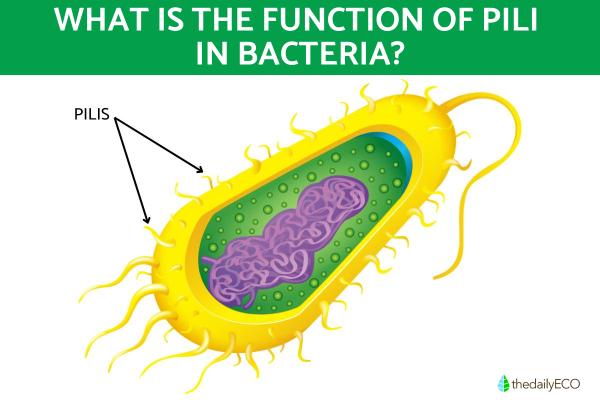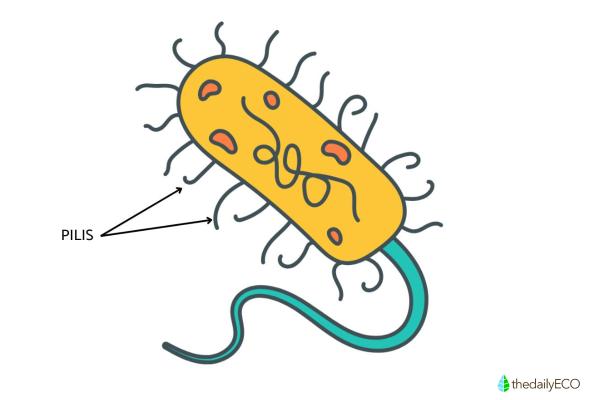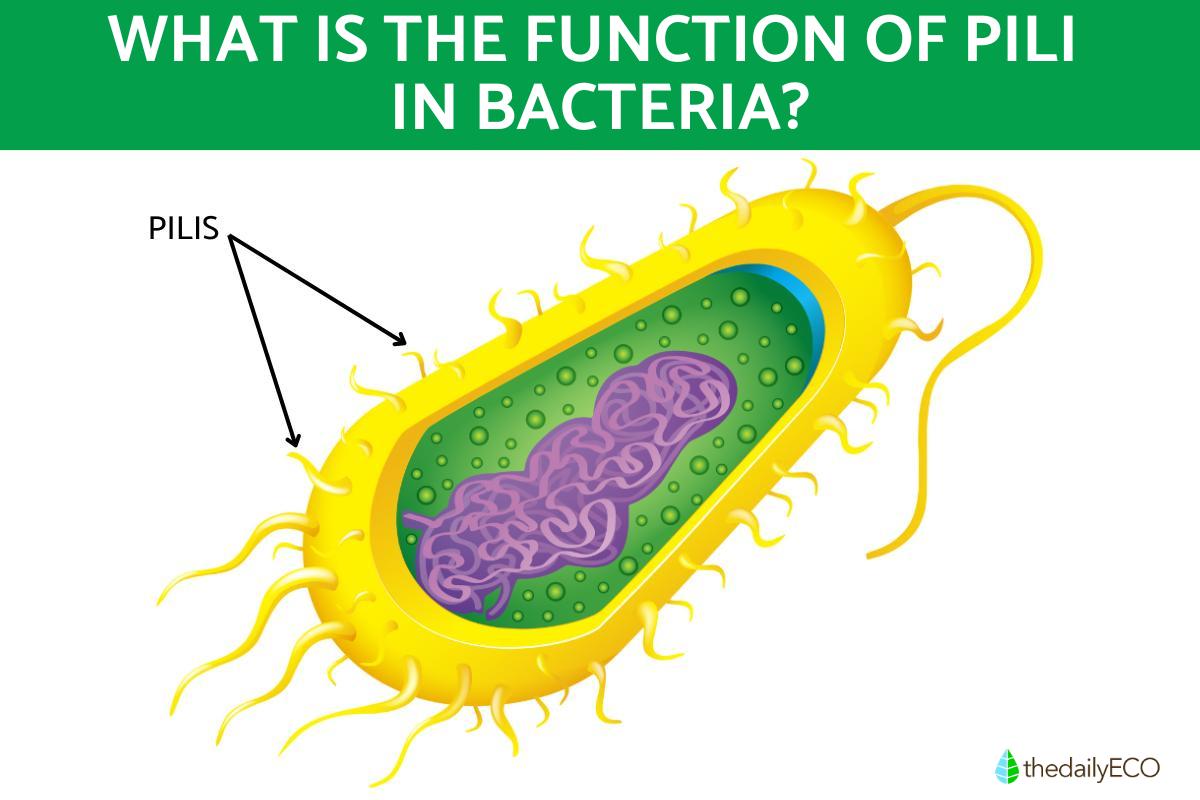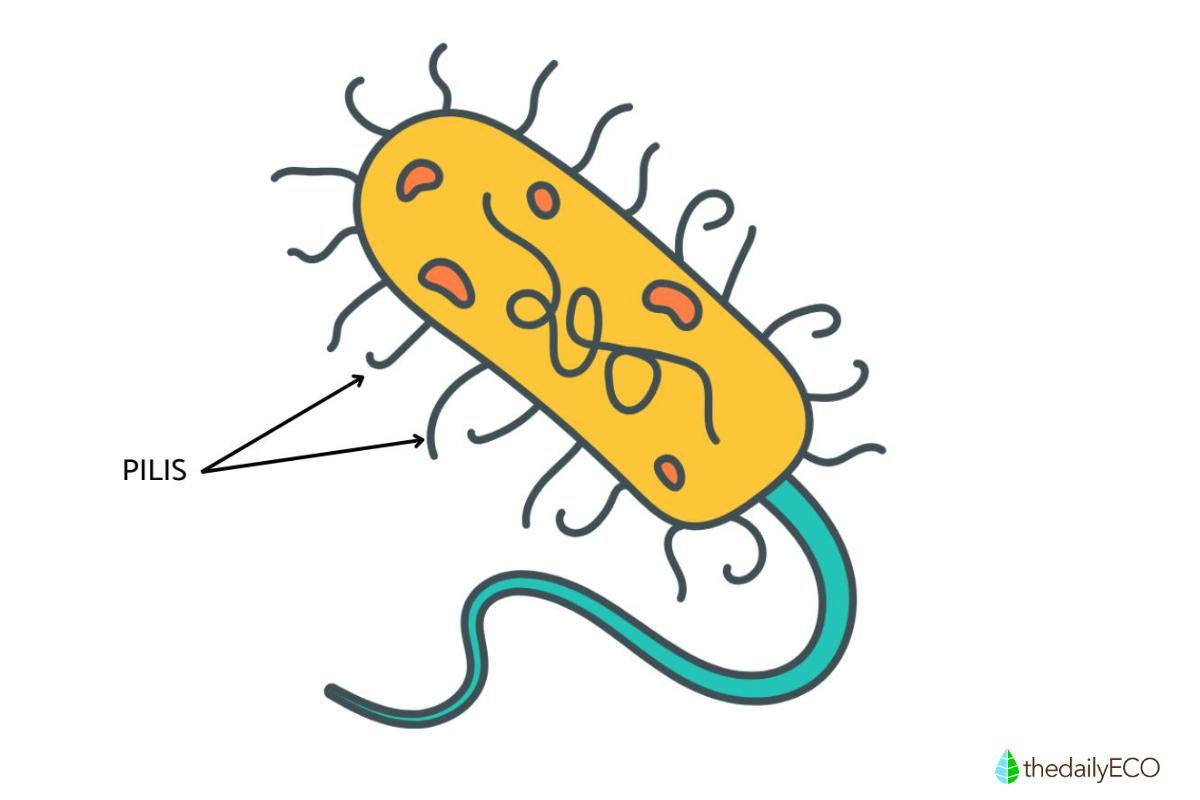What Is the Function of Pili in Bacteria?


Bacterial pili are crucial, hair-like structures that extend from the surface of many bacteria, playing essential roles in survival and adaptation. These tiny appendages help bacteria adhere to surfaces, communicate with other cells, and exchange genetic material, which often leads to increased antibiotic resistance. Understanding the structure, function, and types of pili gives insight into bacterial behavior and offers a basis for developing new treatments.
This article by thedailyECO explores into the key functions of pili, their various forms, and their impact on both bacterial communities and human health.
What are pili?
Pili are filamentous protein structures found on the surface of bacteria. They are made of protein subunits called pilins (or fimbriae, when they are involved in adhesion). Pili vary in length, typically between a few micrometers to over 20 micrometers, and have a diameter ranging from 2 to 11 nanometers.
The structure of pili is usually helical. This arrangement helps with functions like attachment to surfaces, motility, and DNA transfer.
In Gram-negative bacteria, pili are assembled using complex machinery that spans both the inner and outer membranes. Pilin subunits are synthesized inside the cell and then excreted across the inner membrane, where they are built into the pilus structure. This process involves a protein complex that is similar to a type IV secretion system.
The assembly of pili differs between Gram-negative and Gram-positive bacteria. Gram-negative bacteria have a more established assembly system, while Gram-positive bacteria lack an outer membrane and have a different mechanism. In Gram-positive bacteria, pilins are often made in the cytoplasm, then transported across the membrane. They can be recycled or broken down when the pilus disassembles.
While there are differences in how pili are assembled in Gram-negative versus Gram-positive bacteria, the general principles of their formation remain similar.

Types of pili
In Gram-negative bacteria, pili are divided into four main types, each with distinct functions:
- Type I Pili: common in E. coli and related bacteria, Type I pili help bacteria stick to host cells, which can lead to infections like bladder infections. They also contribute to the formation of biofilms on surfaces.
- Type IV Pili: these pili enable bacteria to move across surfaces in a jerky, "twitching" manner, which helps them spread on solid surfaces and locate optimal spots for attachment.
- Type V Pili: found only in Gram-negative bacteria, Type V pili support adhesion and biofilm formation and come in two size ranges, with smaller and larger forms observed.
- Curli Pili: made of amyloid proteins called curlins, curli pili also aid in cell adhesion and biofilm formation, with potential uses in medical applications.
In Gram-positive bacteria, pili are simpler and fall into two types:
- Short, Thin Rods: seen in Streptococcus species, these pili assist in surface adhesion.
- Long, Flexible Pili: Found in bacteria like Corynebacterium, these pili attach to the cell surface through specific enzymes and connect securely to the cell wall.
Gram-positive pili are less diverse but serve similar functions in attachment and biofilm formation, supporting the bacteria's ability to establish on surfaces. If you’re fascinated by unique bacterial traits, you’ll enjoy learning about halophilic bacteria in our next article.
Functions of the pili
Pili play several essential roles in bacterial function, impacting adherence, movement, virulence, genetic exchange, and immune evasion.
- Adherence: pili help bacteria attach firmly to surfaces and host cells, overcoming natural repulsive forces. They use adhesive proteins, called adhesins, located at their tips to facilitate colonization. For example, Neisseria gonorrhoeae uses pili to specifically attach to cervical cells, aiding in infection.
- Motility: some pili, such as type IV pili, enable a movement called twitching motility, allowing bacteria to move across solid surfaces and locate optimal colonization areas. Pseudomonas aeruginosa uses this twitching movement to spread and establish in new environments.
- Virulence: pili are crucial in enhancing bacterial virulence by enabling bacteria to adhere to host tissues. This attachment aids in replication and interaction with the host, contributing to diseases. Pathogenic strains of E. coli and Vibrio cholerae, for instance, use pili to secure their place on host tissues, promoting infection development.
- Exchange of genetic material: pili known as conjugation or F pili enable DNA transfer between bacterial cells. This exchange supports bacterial evolution and allows traits like antibiotic resistance to spread within bacterial populations.
- Immune system evasion: pili also help bacteria evade the host's immune defenses. For example, Streptococcus pyogenes uses its pili to avoid ingestion by white blood cells, enhancing its survival and pathogenic potential.
Curious about the differences between bacteria and viruses? Explore more in our related article.
If you want to read similar articles to What Is the Function of Pili in Bacteria?, we recommend you visit our Biology category.
- Kline KA, Dodson KW, Caparon MG, Hultgren SJ. A tale of two pili: assembly and function of pili in bacteria. Trends Microbiol. 2010 May;18(5):224-32. doi: 10.1016/j.tim.2010.03.002. Epub 2010 Apr 8. PMID: 20378353; PMCID: PMC3674877.
- Proft, T., Baker, EN Pili in Gram-negative and Gram-positive bacteria — structure, assembly and their role in disease. Cell. Mol. Life Sci. 66, 613 (2009). https://doi.org/10.1007/s00018-008-8477-4
- Dhakal, BK, Bower, JM, Mulvey, MA, & Yang, XH (2019). Pili, Fimbriae☆. In T. M. Schmidt (Ed.), Encyclopedia of Microbiology (Fourth Edition) (Fourth Edition, pp. 595-613). Academic Press. https://doi.org/10.1016/B978-0-12-801238-3.02316-3
- Hospenthal, M., Costa, T. & Waksman, G. A comprehensive guide to pilus biogenesis in Gram-negative bacteria. Nat Rev Microbiol 15, 365–379 (2017). https://doi.org/10.1038/nrmicro.2017.40






